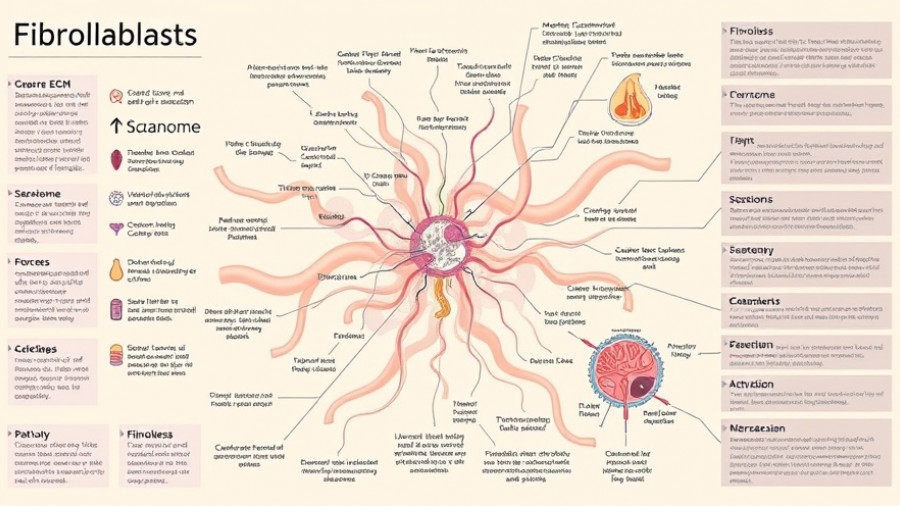
Understanding Fibroblasts and Acupuncture: A Key Connection
For centuries, acupuncture has remained an essential practice in traditional Chinese medicine, offering effective treatment for various ailments. Recent studies have elevated our understanding by showcasing the role of fibroblasts, which are the building blocks of connective tissue, as key players in acupuncture therapy. This intriguing relationship hints at the mechanistic mechanisms of healing at play beneath the surface.
The Mechanotransduction Process in Action
At the heart of acupuncture's therapeutic effects is the phenomenon known as mechanotransduction. Acupuncture needles create physical forces when inserted into specific acupoints. These forces guide the mechanical signals through the collagen fiber network to the fibroblasts, located in the surrounding connective tissues. When stimulated by these mechanical cues, fibroblasts initiate a series of responses, including cytoskeletal remodeling and the release of crucial mediators like ATP and hyaluronic acid, which are significant for managing pain and inflammation.
Fascia: Connecting the Dots
Central to this interaction is the fascia, a connective tissue structure that envelops muscles, organs, and nerves. Every time an acupuncturist manipulates the needle in the tissue, they engage this complex fascial network, allowing fibroblasts to respond dynamically. The interplay among fibroblasts, myofibroblasts, and the surrounding extracellular matrix is indicative of acupuncture's benefits. This process promotes healing by optimizing tissue health and pain management.
Discussing the Pain Connection: Fibroblasts and Inflammation
Fibroblasts are not only executing structural roles but also actively participating in the body's immune responses. By communicating with immune cells—like macrophages and mast cells—they initiate pathways that can attenuate inflammation and promote healing at injury sites. Importantly, studies have observed that acupuncture leads these cells to release bioactive substances that contribute to these processes. Therefore, understanding fibroblasts enables us to unveil acupuncture's full therapeutic potential in alleviating chronic pain and enhancing overall well-being.
Why This Matters for Patients and Practitioners
Recognizing the role of fibroblasts in acupuncture provides compelling insights for both patients and practitioners. For patients, this knowledge can alleviate fears regarding alternative medicine approaches, equipping them with understanding and confidence in their treatments. For practitioners, it underscores the importance of precise needling techniques and treatment strategies centered around these cellular responses to optimize patient outcomes.
As science continues to support time-honored practices like acupuncture, we can look forward to a future where ancient wisdom and modern research propel holistic health to new heights.
 Add Row
Add Row  Add
Add 




Write A Comment